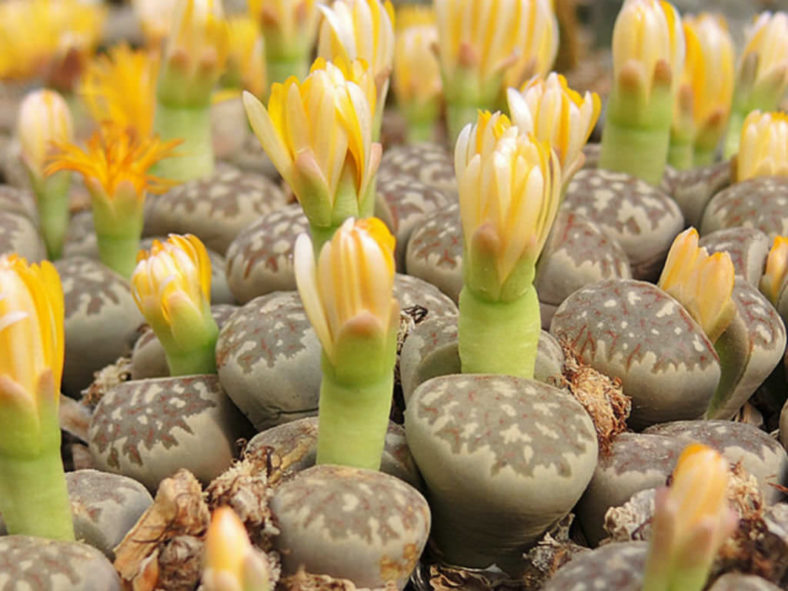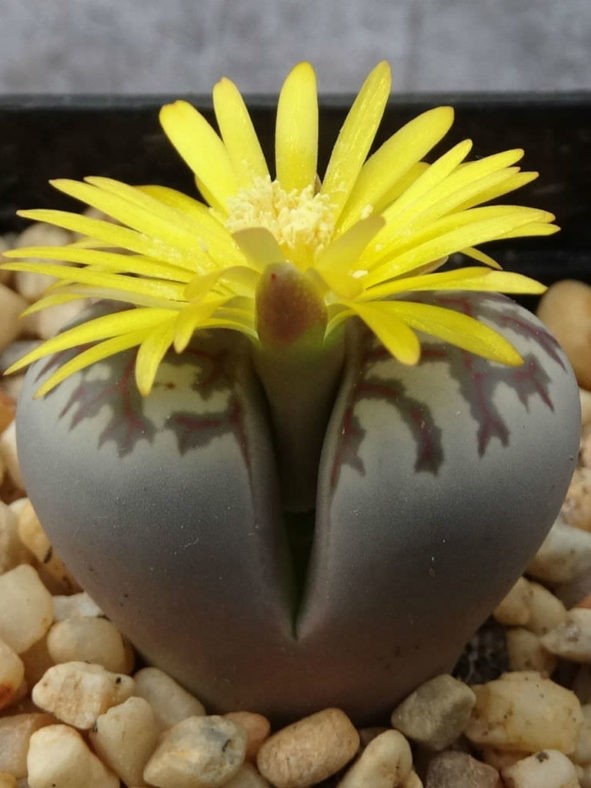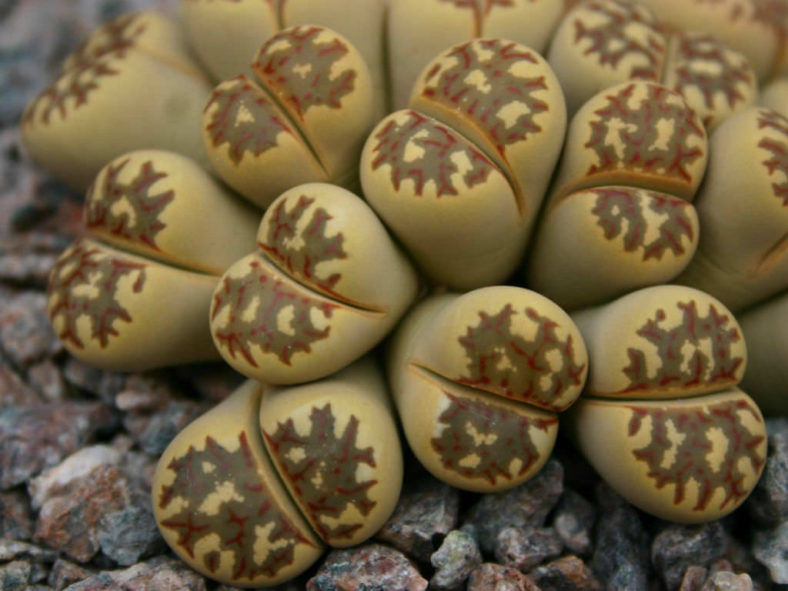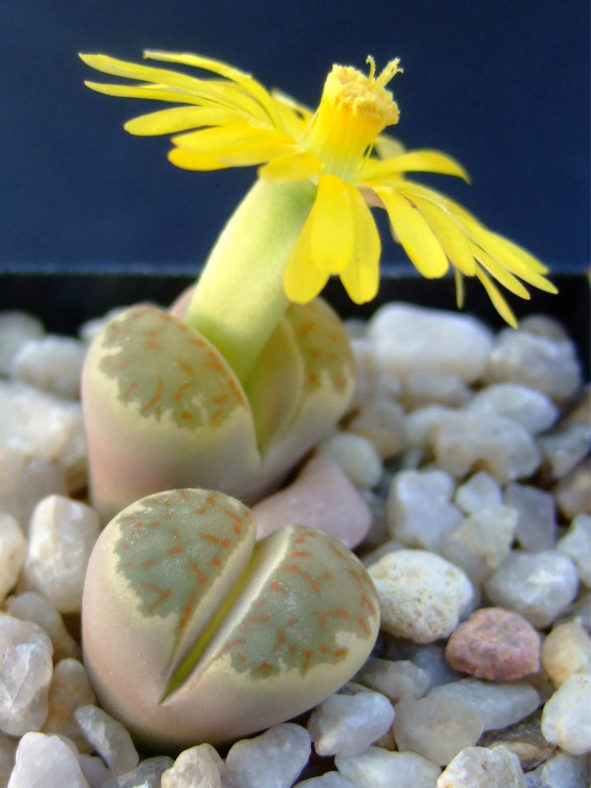Scientific Name
Lithops dorotheae Nel
Common Name(s)
Living Stones
Scientific Classification
Family: Aizoaceae
Subfamily: Ruschioideae
Tribe: Ruschieae
Genus: Lithops
Etymology
The specific epithet "dorotheae" (pronounced "dor-uh-THEE-ay") honors Dr. Dorothea Christina van Huyssteen (1910-1952), who discovered the plant in 1935. She was the daughter of Daniel Petrus van Huyssteen (1875-1968), a collector of succulent plants in Bellville near Cape Town in South Africa.
Origin
Lithops dorotheae is native to South Africa (Northern Cape).
Description
Lithops dorotheae is a dwarf succulent with bodies consisting of two opposite, yellowish-brown leaves with a deep fissure separating them. The bodies have translucent, grey-green windows at the upper surface with red dots and lines. The bodies can grow up to 1.2 inches (3 cm) tall.
The yellow flowers, which can reach a diameter of 1.3 inches (3 cm), appear in mid-fall.

Hardiness
USDA hardiness zone 10a to 11b: from 30°F (-1.1°C) to 50°F (10°C).
How to Grow and Care
These plants develop a new set of leaves every year, with new leaves emerging in the fall and growing through the winter and into the summer. Lithops will go dormant in late summer, and water should be severely restricted to prevent bursting leaves. The flowers appear near the end of summer or fall, first as a small bud forcing its way between the leaves, and growth will begin again. It is safe to water during this period. The leaves will still grow into the winter, but you should stop watering, even as the older leaves shrivel and encase the new growth. In the spring, it's safe to begin lightly watering again as the plant grows again, heading toward its summer dormancy period and the emergence of new leaves in the fall.
Lithops are very slow-growing, small plants, making them ideal as houseplants (once you get the hang of their watering schedule). Older plants form attractive clumps of "pebbles" in their pots, which are highly prized. In general, plants should only be repotted if there are cultural problems (soggy soil) or the plant has outgrown its dish container, which will only happen every several years.
See more at How to Grow and Care for Lithops.
Links
- Back to genus Lithops
- Succupedia: Browse succulents by Scientific Name, Common Name, Genus, Family, USDA Hardiness Zone, Origin, or cacti by Genus
Photo Gallery
Click on a photo to see a larger version.


